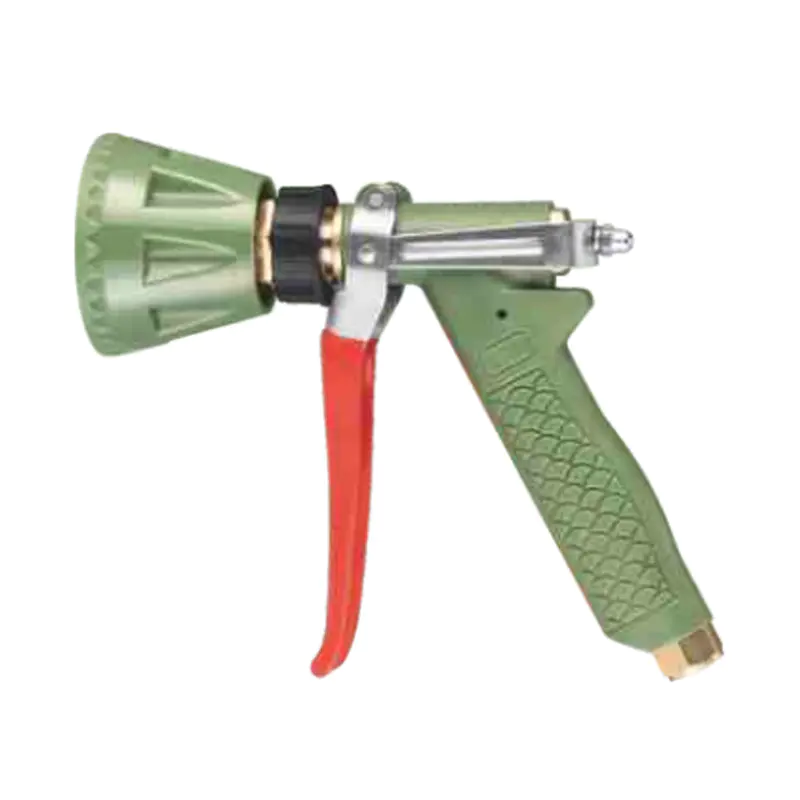Dear users and buyers, I am honored to introduce t...
See DetailsIn agricultural operations, the uniformity of spray patterns directly impacts the effectiveness of pesticides, fertilizers, and herbicides. Uneven application can leave gaps where pests thrive or over-saturate areas, wasting resources and potentially harming crops. Achieving consistency relies on the tools used, particularly the synergy between Agricultural Pressure Adjustable Nozzles and Agricultural Spray Guns. These tools work together to deliver reliable coverage, addressing the practical needs of farmers and growers across diverse crops and conditions.

Why Consistent Spray Patterns Matter in Agriculture
Consistent spray patterns are foundational to successful agricultural application. For pesticides, uniform coverage ensures every plant receives the necessary protection, reducing the risk of pest infestations in untreated areas. For fertilizers, even distribution supports balanced nutrient uptake, promoting steady growth rather than patchy development.
This uniformity also supports sustainability. When sprays are applied evenly, less product is needed overall, as there’s no need to re-spray missed areas. This reduces the environmental footprint of agricultural operations, aligning with practices that prioritize resource efficiency. For delicate crops like fruits or vegetables, consistent patterns prevent localized over-spraying that could damage tender leaves or fruits, preserving yield quality.
How Agricultural Pressure Adjustable Nozzles Support Consistency
Agricultural Pressure Adjustable Nozzles are designed to fine-tune spray patterns by modifying pressure, directly influencing droplet size and coverage area. Unlike fixed nozzles, which produce a single pattern, these adjustable versions allow users to alter pressure within a range to match specific needs.
At lower pressures, droplets are larger and heavier, suitable for mature crops with thick foliage—they penetrate dense leaves without drifting away. Higher pressures create finer droplets, ideal for delicate seedlings or crops with thin leaves, ensuring coverage on even the smallest surfaces. This adjustability lets users tailor the pattern to crop type, growth stage, and weather conditions.
The nozzle’s design also plays a role.
feature precision-machined orifices that maintain shape under varying pressures, ensuring the spray pattern—whether fan, cone, or stream—remains uniform across pressure adjustments. This stability prevents irregularities like "streaking" or "spotting" that can occur with poorly designed nozzles.
The Agricultural Spray Gun’s Role in Maintaining Pattern Integrity
The Agricultural Spray Gun serves as the bridge between the sprayer system and the nozzle, playing a critical role in preserving pattern consistency. Its design influences how steady the nozzle remains during application, as hand movement or instability can disrupt the spray. Ergonomic features, such as padded grips and balanced weight distribution, reduce user fatigue during long sessions, helping maintain a steady hold.
Many Agricultural Spray Guns include flow control valves that work in tandem with the adjustable nozzle. These valves allow users to regulate the volume of liquid passing through the nozzle without altering pressure, ensuring the pattern remains consistent even as application rates change. For example, when covering a large area quickly, a higher flow rate can be set, but the nozzle’s pressure adjustment keeps droplet size and distribution uniform.
The gun’s connection to the nozzle is also key. Secure threading or locking mechanisms prevent the nozzle from loosening during use, which would distort the spray pattern. This stability is particularly important in rough field conditions, where vibrations or accidental bumps might otherwise disrupt the setup.
Practical Adjustments for Varied Agricultural Scenarios
Different crops and applications demand specific spray patterns, and the combination of adjustable nozzles and spray guns allows for on-the-spot modifications. For row crops like corn or soybeans, a narrow fan pattern directed at the base of plants ensures herbicides target weeds without hitting crop stems. For broadleaf crops like lettuce or cabbage, a wider fan covers the entire plant surface, delivering pesticides evenly.
When transitioning from early-season to late-season application, pressure adjustments adapt to crop size. Seedlings with delicate leaves benefit from lower pressure to produce larger, gentler droplets that won’t damage foliage. Mature plants, with thicker leaves and more extensive canopies, often require higher pressure to ensure droplets penetrate to lower leaves.
In windy conditions, slight pressure reductions can help. Finer droplets (from higher pressure) are prone to drifting, so lowering pressure to produce larger droplets keeps the spray focused on the target area, maintaining pattern integrity despite breezes.
Maintaining Consistent Patterns Over Time
Over use, nozzles and guns can develop wear that disrupts spray patterns. Regular checks are essential: inspect nozzles for clogs or nicks. Soaking nozzles in a mild cleaning solution after use removes residue from pesticides or fertilizers, preventing buildup that alters flow.
Spray guns also require maintenance. Lubricating flow control valves ensures smooth operation, preventing sudden jumps in flow that disrupt patterns. Checking connections for leaks is critical too—even small leaks reduce pressure at the nozzle, changing droplet size and coverage. Replacing worn O-rings or gaskets maintains a tight seal, preserving the consistency of the spray.
In fields and greenhouses, where reliable application directly affects crop health, the combination of Agricultural Pressure Adjustable Nozzles and Agricultural Spray Guns provides a practical solution. Their ability to deliver consistent patterns, adapt to varied conditions, and stand up to regular use makes them indispensable tools in supporting steady, effective agricultural practices.